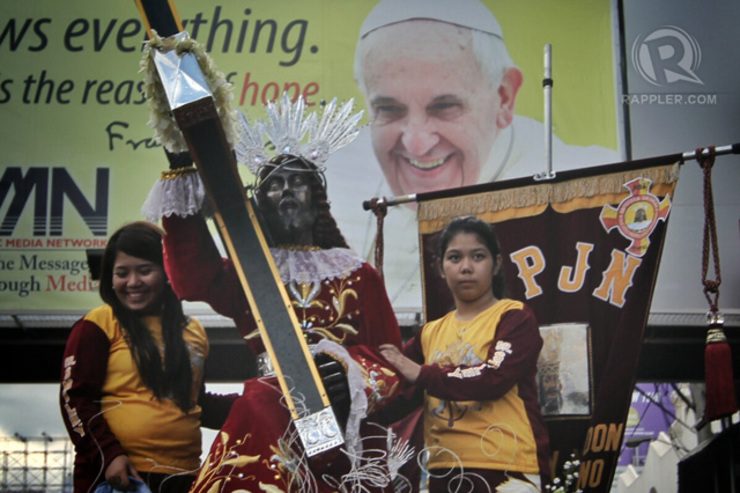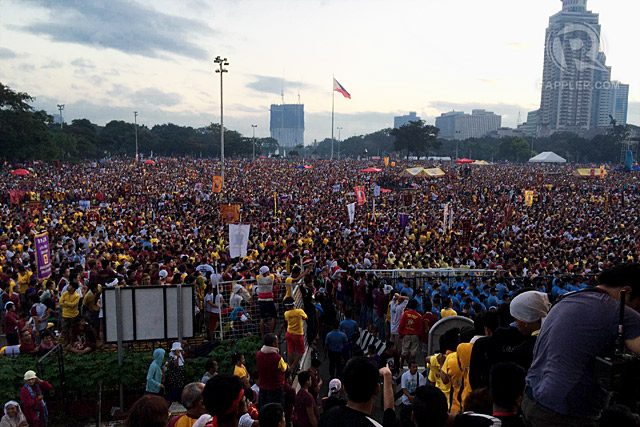SUMMARY
This is AI generated summarization, which may have errors. For context, always refer to the full article.

MANILA, Philippines (UPDATED) – The Black Nazarene is roughly as tall as the average Filipino but the devotion surrounding it and the frenzy that accompanies its feast day are larger than life.
On Friday morning, January 9, devotees – expected to swell to millions through the day – began to take part in the annual “traslacion” or the procession of the religious image through the streets of Manila, starting from the Quirino Grandstand until it returns back to the Minor Basilica of the Black Nazarene (also known as the Quiapo Church).
At around 5 am, marshals seemingly made a mistake and allowed devotees through the barriers, closer to the image of the Nazarene. But organizers clarified that a prayer would precede the start of the procession.
“Relax lang,” a voice boomed as devotees followed suit and settled down.
Devotees who tried to get as close as they can to the Nazareno left no space for organizers to attach the rope used to pull the carriage, delaying the procession. It took church officials around an hour to coax the crowd to cooperate.
The procession began past 8 am and the carriage finally inched away.
The centuries-old image of the Black Nazarene began its yearly journey, following a religious service led by Manila Archbishop Luis Antonio Cardinal Tagle at 6 am.
Hundreds of thousands are walking, marching, or jostling barefoot along the procession itself while even more take part in the feast by lighting a candle or saying a prayer as the image passes through its route.
The Philippines’ largest yearly religious event takes on an importance beyond religion – it will serve as a dry-run for Manila government officials in the lead-up to Pope Francis’ visit to the Philippines roughly a week after.
Some 3,500 police personnel from Manila have been deployed to secure the procession route and the crowd, on top of forces from the Metropolitan Manila Development Authority (MMDA).

Hazards, glitches
The image reaches Quiapo church either late Friday evening or the wee hours of Saturday, January 10. In 2012, the procession took 22 hours after the wheels of the andas – the carriage carrying the Black Nazarene – broke off early in the procession and the rope pulling the carriage broke hours later as well.
That year, roughly 8 million devotees took part in the procession.
In 2014, devotees “hijacked” the procession, cutting short the mass as they ran past security barriers to get to the image.
But amid the chaos that is the procession is a sort of order: devotees called “namamasan (carriers)” pull the andas using two big ropes while designated marshals assist other devotees to either climb up the carriage or wipe the Black Nazarene with pieces of cloth, in the belief that doing so would “transfer” the image’s miraculous powers onto them.
People from all walks of life – men, women, the young and the old – will be attempting to climb up the andas. In the past year, health workers reported at least 1,000 emergencies.
Devotees of the Black Nazarene view the image, a mulatto image of Jesus Christ, as a symbol of their suffering. – Rappler.com
Add a comment
How does this make you feel?
There are no comments yet. Add your comment to start the conversation.